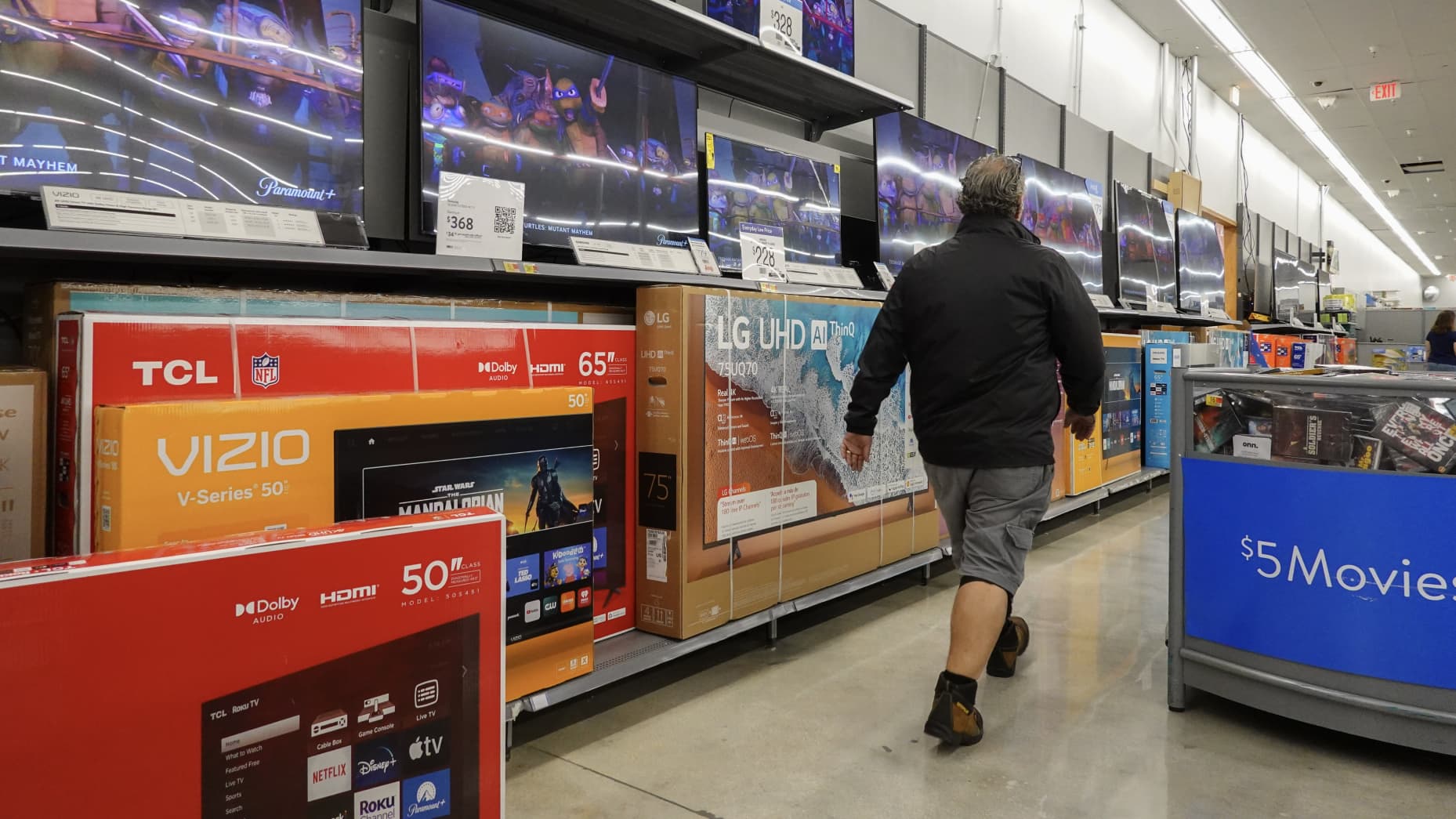
The Ultimate 2025 TV Buyer's Guide: Comparing North America's Hottest Models
The modern television market is no longer a simple contest of features and screen sizes; it has evolved into a fascinating philosophical divergence. On one side stand the titans of Mini-LED technology—Sony, TCL, and Hisense—relentlessly chasing the sun, engineering displays that push the boundaries of brightness to conquer any viewing environment. On the other, the purists of OLED technology—LG and Samsung—have mastered the shadow, wielding the power of self-emissive pixels to achieve the perfect contrast and profound cinematic depth that was once the exclusive domain of the darkened theater.

This year's lineup represents the pinnacle of these competing ideologies. Each of the six contenders in this review is a standard-bearer for its brand, the result of years of iterative engineering and fierce competition. We have assembled the very best: Sony's processing-prowess in the Bravia 9, TCL's ambitious flagship QM8K and its value-oriented sibling the QM6K, Hisense's brightness-focused U8N, LG's consummate all-rounder the C5 OLED (represented by the current C4 model), and Samsung's color-virtuoso the S90F OLED (represented by the current S90D model).
The notion of a single "best" television has become an antiquated concept. The ideal choice now hinges on a deeply personal calculus: the ambient light of your room, the content you consume, your priorities between cinematic immersion and gaming responsiveness, and, of course, your budget. This report serves as a definitive guide through this complex and brilliant landscape, dissecting the performance of each contender to help you find the perfect centerpiece for your digital life.

The Contenders: A Tale of the Tape
Before delving into the nuanced performance of each display, it is essential to understand the core specifications that define them. Metrics like peak brightness, measured in nits, determine how impactful High Dynamic Range (HDR) content appears and how well a TV can combat glare in a bright room. The number of local dimming zones in a Mini-LED TV dictates its precision in controlling light and shadow, directly impacting contrast and black levels. The count of full-bandwidth HDMI 2.1 ports has become a critical benchmark for gamers, enabling next-generation features like 4K gaming at 120 frames per second. The following table provides a direct, at-a-glance comparison of our six contenders, standardized at the popular 65-inch size to create a level playing field.
| Model | Display Technology | Peak HDR Brightness (Nits, Measured) | Dimming Zones | HDR Support | Audio System | HDMI 2.1 Ports (48Gbps) | Smart Platform | MSRP (USD, 65-inch) |
| Sony Bravia 9 | Mini LED QLED | ~3,000+ | ~1,000+ | Dolby Vision, HDR10, HLG | 2.2.2 Ch. Acoustic Multi-Audio+ | 2 of 4 | Google TV | $3,300 |
| TCL QM8K | QD-Mini LED | ~2,300 | 1,680 | Dolby Vision IQ, HDR10+, HDR10, HLG | 4.2.2 Ch. Bang & Olufsen | 2 of 4 | Google TV | $2,500 |
| Hisense U8N | Mini LED QLED | ~3,000 | 2,000+ | Dolby Vision, HDR10+, HDR10, HLG | 2.1.2 Channel | 2 of 4 | Google TV | $1,500 |
| LG C5 (C4) | WOLED | ~1,050 | N/A (Per-Pixel Dimming) | Dolby Vision, HDR10, HLG | 2.2 Channel | 4 of 4 | webOS | $2,700 |
| Samsung S90F (S90D) | QD-OLED / WOLED | ~1,200 | N/A (Per-Pixel Dimming) | HDR10+, HDR10, HLG | 2.1 Channel | 4 of 4 | Tizen | $2,700 |
| TCL QM6K | Mini-LED QLED | ~700 | 500 | Dolby Vision IQ, HDR10+, HDR10, HLG | 2.1 Channel | 2 of 4 | Google TV | $800 |
The Art of the Image: A Deep Dive into Picture Quality
The ultimate measure of any television is the image it produces. Here, the fundamental differences in display technology create distinct visual philosophies, each with its own set of strengths and compromises.
The Mini-LED Offensive: A Symphony of Brightness

Mini-LED technology represents the apex of traditional LCD design, using thousands of miniaturized LEDs as a backlight, grouped into hundreds or thousands of individually controlled dimming zones. This allows for a level of brightness and contrast far beyond older TVs, but the quality of the execution varies dramatically between manufacturers.
Sony Bravia 9 - The Maestro of Processing(SONY Bravia 9 Mini LED In-Depth Review)

Positioned as the premium, "cost-is-no-object" Mini-LED, the Bravia 9's defining characteristic is not merely its impressive brightness but the intelligence with which it is wielded. Sony's legendary Cognitive Processor XR, paired with the XR Backlight Master Drive, orchestrates the thousands of Mini-LEDs with surgical precision. The result is a picture with "impressively deep blacks and bold, punchy contrast," effectively narrowing the performance gap to OLED in dark scenes. In bright rooms, its X-Anti Reflection layer is remarkably effective at mitigating glare, making it a top-tier choice for daytime viewing. Where some competitors can appear overly saturated, the Bravia 9 exhibits Sony's signature natural and balanced color tuning, prioritizing realism over artificial "pop". This is not simply a display that gets bright; it is a display that is intelligently bright, leveraging its power for accuracy and impact. This approach reveals a different competitive axis in the market; instead of chasing the highest numbers, Sony leverages its processing to refine the output to an almost artistic degree, selling an interpretation of the image that appeals to those who value naturalism over raw power.
TCL QM8K - The Ambitious Challenger


The QM8K is TCL's flagship, an audacious attempt to deliver the performance of premium brands at a more accessible price point. It largely succeeds. With a measured peak HDR brightness of 2,268 nits in the accurate Filmmaker Mode and coverage of 97.28% of the DCI-P3 color space, its on-paper specifications are formidable. In practice, this translates to HDR content that is beautifully saturated and visually arresting. The key to its performance is TCL's "all-domain halo control technology," an advanced local dimming algorithm that proves highly effective at minimizing blooming—the stray light that can create halos around bright objects on dark backgrounds. This allows the QM8K to hold its own against OLEDs in challenging high-contrast scenes. Furthermore, TCL has addressed a historic weakness of VA-type panels by incorporating its WHVA (wide high vertical alignment) technology, which noticeably improves off-axis viewing angles compared to its predecessors.
Hisense U8N - The Brightness Brute

If the Sony is about finesse, the Hisense U8N is about overwhelming force. It is one of the brightest consumer televisions ever made, capable of reaching a searing peak brightness of up to 3,000 nits. This immense power makes it an unparalleled performer in the most brightly lit living rooms, cutting through ambient light and glare with ease. This raw power, however, is a double-edged sword. The relentless pursuit of brightness fundamentally exposes the inherent limitations of its underlying VA LCD panel technology. The U8N's most significant weakness is its poor off-axis viewing performance; when viewed from an angle, the picture loses a substantial amount of color saturation and contrast. Its greatest strength is therefore inextricably linked to its greatest weakness, forcing a conscious choice upon the consumer that simply doesn't exist with OLED. Its local dimming, backed by over 2,000 zones, delivers impressively deep blacks but can occasionally be over-aggressive, obscuring fine details in the darkest parts of an HDR image when compared to the more nuanced TCL QM8K.
TCL QM6K - The Value Vanguard

The QM6K serves as an accessible entry point into the world of high-performance television. It brings the core benefits of Mini-LED—improved brightness and contrast over standard LED TVs—to a remarkably aggressive price point. Its peak brightness of around 700 nits is modest by Mini-LED standards, making it better suited for moderately lit rooms than sun-drenched ones. However, its value proposition is undeniable. It delivers vibrant color, solid contrast, and surprisingly effective blooming control that punches well above its weight class. For anyone upgrading from an older, non-dimming LED television, the improvement in picture quality will be a revelation.
The OLED Doctrine: The Power of Perfect Black
OLED (Organic Light Emitting Diode) technology is fundamentally different. Each of its 8.3 million pixels generates its own light and can be turned off completely, resulting in true, absolute black and a theoretically infinite contrast ratio. This per-pixel control gives OLEDs an inherent advantage in precision and cinematic quality, though they cannot match the sheer brightness of Mini-LEDs.
LG C5 (C4) - The Consummate All-Rounder

For years, LG's C-series has been the benchmark OLED for most people, and the C4 continues this legacy of balancing superb performance, a robust feature set, and a reasonable price. Its WOLED (White OLED) panel delivers the perfect blacks and stunning contrast for which the technology is known. Its key advantage over its main rival, the Samsung S90D, is its superior performance in rooms with ambient light. While the S90D's QD-OLED panel can appear slightly washed out or gray in a bright room, the C4's panel construction allows it to better preserve its deep black levels, maintaining a punchier image. The trade-off is a glossier screen finish that is more susceptible to direct reflections from windows or lamps. In dark-room viewing, the C4 excels, rendering fine shadow detail with a clarity that even the best Mini-LEDs struggle to replicate.
Samsung S90F (S90D) - The Color Virtuoso (with a Catch)

When equipped with its native QD-OLED panel, the Samsung S90D is a marvel of color. This technology adds a layer of quantum dots to the OLED structure, allowing it to produce more saturated and vibrant colors at high brightness levels than a traditional WOLED panel. This results in superior color volume, making animated films and dynamic HDR content appear with an intensity and richness that is truly breathtaking.
However, prospective buyers must be aware of a significant issue known as the "panel lottery." Due to supply chain dynamics, Samsung sources panels for the S90D from both its own Samsung Display (QD-OLED) and rival LG Display (WOLED). This means that the 55, 65, and 77-inch versions of the S90D may ship with either panel technology, and there is no clear way for a consumer to know which they are getting before purchase. The performance difference is meaningful; a WOLED version will have lower color volume and slightly lower peak brightness, making it a less compelling product. This issue is more than a manufacturing quirk; it is the public-facing consequence of a fierce rivalry between the two dominant OLED suppliers. It forces a level of technical literacy onto consumers that is unprecedented, turning a simple purchase into a research project and making the consistent LG C4 a "safer" bet for many. A final, consistent drawback for the S90D is its lack of support for Dolby Vision, a popular HDR format that is supported by the LG C4 and all the Mini-LEDs in this test.
The Sound and the Fury: Evaluating Onboard Audio
While picture quality rightfully commands the most attention, a television's integrated audio system is crucial to the overall experience. Here, a clear hierarchy emerges, one that is often dictated by the physical constraints of the television's design.
There is a direct, inverse correlation between the thinness of a television's chassis and the quality of its integrated audio. The stunning, ultra-slim profiles of the OLED models necessitate the use of small, down-firing speakers that simply cannot move enough air to produce a full, compelling sound. Conversely, the thicker Mini-LED sets have more internal volume to house more complex speaker arrays, including dedicated subwoofers and up-firing drivers, resulting in a superior out-of-the-box audio experience.
The Premium Tier
Sony Bravia 9: Sony's Acoustic Multi-Audio+ system remains the gold standard for integrated TV sound. By using tweeters embedded in the frame of the TV itself, alongside up-firing speakers, it creates a genuinely immersive and expansive soundstage. Sound appears to emanate directly from the action on screen, and dialogue clarity is exceptional.
TCL QM8K: The partnership with esteemed audio brand Bang & Olufsen yields mixed, though generally positive, results. The 4.2.2 channel system can get surprisingly loud and powerful, with some tests noting decent bass and effective surround sound simulation. However, other evaluations find the sound underwhelming, somewhat light on bass, and prone to distortion at higher volumes, suggesting the branding may promise slightly more than the hardware can consistently deliver.
The Mid-Tier Performers
Hisense U8N: This model features a capable 2.1.2 channel Dolby Atmos speaker system that provides good overall sound quality for a television. It includes a rear-mounted subwoofer that adds a respectable amount of low-end weight to movie and game soundtracks, making it a solid, serviceable audio solution that clearly outperforms budget models.
The "Soundbar Recommended" Tier
LG C5 (C4) & Samsung S90F (S90D): As is typical for ultra-thin OLEDs, audio is a clear compromise. Both models are described as having "average" or "passable" sound that lacks bass and depth. While they support Dolby Atmos processing, the physical speakers are insufficient to create a truly immersive soundscape. For any serious movie watching or gaming, an external soundbar or sound system is highly recommended to match the superlative picture quality.
TCL QM6K: The audio on this value-focused model is described as "meh." While dialogue clarity is acceptable for casual viewing, the midrange sounds boxy and the bass is muted, failing to live up to the quality of its picture.
The Gamer's Realm: Latency, Refresh Rates, and Connectivity
For a growing segment of the market, a television is not just a display for movies but a high-performance monitor for gaming. In this arena, connectivity has become a crucial dividing line between the top-tier, "no-compromise" gaming TVs and the rest of the market. The number of full-bandwidth HDMI 2.1 ports, which support features like 4K/120Hz, has become a key differentiator.
The Connectivity Kings - LG C5 (C4) & Samsung S90F (S90D)
LG and Samsung have clearly identified the enthusiast gamer as a core audience and have invested in the chipsets to match. Both the C4 and S90D are the undisputed champions for gamers with multiple devices, each offering four full-bandwidth HDMI 2.1 ports. This allows a user to connect a PS5, an Xbox Series X, a high-end PC, and an eARC soundbar simultaneously, without compromise or the need for an external switch. Both support 4K gaming at up to 144Hz, Variable Refresh Rate (VRR), and Auto Low Latency Mode (ALLM). The LG C4 holds a slight edge for its support of NVIDIA G-Sync and Dolby Vision Gaming, while the S90D counters with its excellent, integrated Samsung Gaming Hub for cloud gaming services. Input lag on both is exceptionally low, with the LG C4 measuring a blistering 9.2ms, ensuring a near-instantaneous response.
The Capable Contenders - TCL & Hisense
The TCL QM8K, QM6K, and Hisense U8N are all excellent gaming displays, but they are held back by a critical limitation: they offer only two HDMI 2.1 ports. As one of these ports must also serve as the eARC connection for a soundbar, users with more than one next-generation gaming device will face a connectivity bottleneck. This cost-saving measure creates a significant competitive disadvantage. Beyond this, their performance is strong. All three support 4K/144Hz and key VRR standards like AMD FreeSync Premium Pro. Their input lag is very good—around 13.2ms for the QM8K—though a step behind the class-leading OLEDs.
The Premium Compromise - Sony Bravia 9
The Bravia 9's most significant weakness lies in its gaming connectivity. Like its less expensive Mini-LED rivals, it offers only two HDMI 2.1 ports, a baffling and unforgivable omission for a premium flagship television in this price bracket. While it supports 4K/120Hz, VRR, and boasts "Perfect for PlayStation 5" features like Auto HDR Tone Mapping, the limited port selection is a major drawback for any serious gamer with multiple modern devices. Its input lag is also slightly higher than its direct competitors, though at around 9.8ms for 4K/120Hz, it is still low enough to be imperceptible to all but the most elite competitive players.
The Daily Experience: Design, Interface, and Usability
A television is also a piece of furniture and a daily-use appliance. Its physical design, remote control, and smart TV interface are crucial components of the long-term ownership experience.
Physical Design & Ergonomics
There is a clear trend towards central pedestal stands, which are more versatile for placement on smaller furniture. The Sony Bravia 9, TCL QM8K, Hisense U8N, LG C4, and Samsung S90D all feature this design, with Sony's offering multiple height and width adjustments for soundbar accommodation. The budget-oriented TCL QM6K uses more traditional wide-set feet, which may require a wider media console. In terms of remotes, Samsung's minimalist, solar-charging wand is a highlight of simplicity, while LG's motion-controlled Magic Remote is feature-rich but can feel bulky. Sony and TCL (on the QM8K) provide premium, backlit remotes that are a pleasure to use in the dark.
Smart TV Platforms
The battle of the operating systems is largely a matter of personal preference, as all are mature and feature-rich.
Google TV (Sony, TCL, Hisense): This platform is widely praised for its content-forward approach, which surfaces recommendations from all your streaming services on the home screen. It offers robust app support and excellent integration with the Android ecosystem, including a built-in Chromecast.
LG webOS: A fast, stable, and intuitive platform known for its point-and-click navigation via the Magic Remote. The latest version is more streamlined and supports user profiles, though the large, unremovable ad banner at the top of the home screen is a common complaint.
Samsung Tizen: Another fast and capable platform, Tizen's standout feature is the integrated Gaming Hub. However, some users find its overall interface less fluid than its competitors and have reported occasional issues with app stability and customization options.
Final Verdict: The Right TV for You
After extensive analysis, it is clear that there is no single "best" television. Instead, there is a "best" television for a particular type of user. The following recommendations are designed to match your priorities with the ideal display from our lineup.
The Cinephile's Choice: Sony Bravia 9
For the viewer with a dedicated, light-controlled room who prioritizes image accuracy, natural color, and world-class motion processing above all else. Its ability to render deep blacks with minimal blooming makes it the closest a Mini-LED can get to an OLED, offering a cinematic experience that is second to none. It is the choice for those who appreciate the art of image processing, provided they can accept its premium price and limited gaming connectivity.
The Bright Room Champion: Hisense U8N
If your television lives in a sun-drenched family room and is primarily used for daytime sports and general viewing, the sheer light output of the U8N is impossible to ignore. It will cut through glare and deliver a punchy, vibrant HDR image that less powerful TVs simply cannot match. The necessary trade-off is its poor off-axis performance, making it an ideal choice for viewers seated directly in front of the screen.
The Ultimate Gaming Display: LG C5 (C4) OLED
With four full-bandwidth HDMI 2.1 ports, class-leading input lag, and support for every major gaming feature including G-Sync and Dolby Vision Gaming, the C4 is the most versatile and future-proof television for serious gamers. Its perfect black levels and infinite contrast provide an unparalleled sense of depth and atmosphere in games, making it the complete package for any console or PC enthusiast.
The High-Performance Value Pick: TCL QM8K
The QM8K offers a remarkable percentage of the Sony Bravia 9's performance for a significantly lower price. It delivers stunning brightness, excellent contrast with minimal blooming, and a strong feature set that holds its own against the best in the market. While its gaming connectivity is limited to two ports and its audio is inconsistent, its picture-quality-per-dollar is arguably the best on the market, making it the smart choice for enthusiasts on a budget.
The Best Bang for Your Buck: TCL QM6K
For those upgrading from an older television on a tight budget, the QM6K is a revelation. It brings the core benefits of Mini-LED technology—a bright, high-contrast picture—and next-gen gaming features like 144Hz VRR to a price point that was previously unthinkable. It is, without question, the best value proposition in this entire lineup for the cost-conscious buyer.
The Wild Card: Samsung S90F (S90D)
This television comes with a crucial caveat. If you can guarantee you are purchasing a model with a QD-OLED panel, it becomes a powerful contender for both gamers (thanks to its four HDMI 2.1 ports) and cinephiles who crave the most vibrant colors possible. However, due to the uncertainty of the "panel lottery," it is a risky purchase. For most buyers, the consistency, superior bright-room performance, and Dolby Vision support of the LG C4 make it the safer and often superior choice in the premium OLED category.

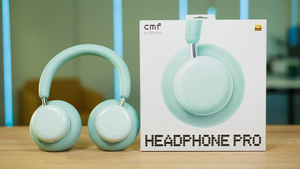
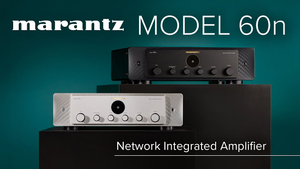
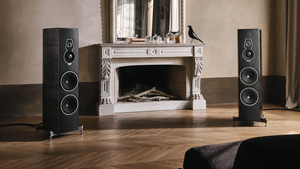

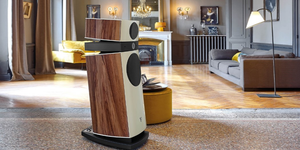
Comments